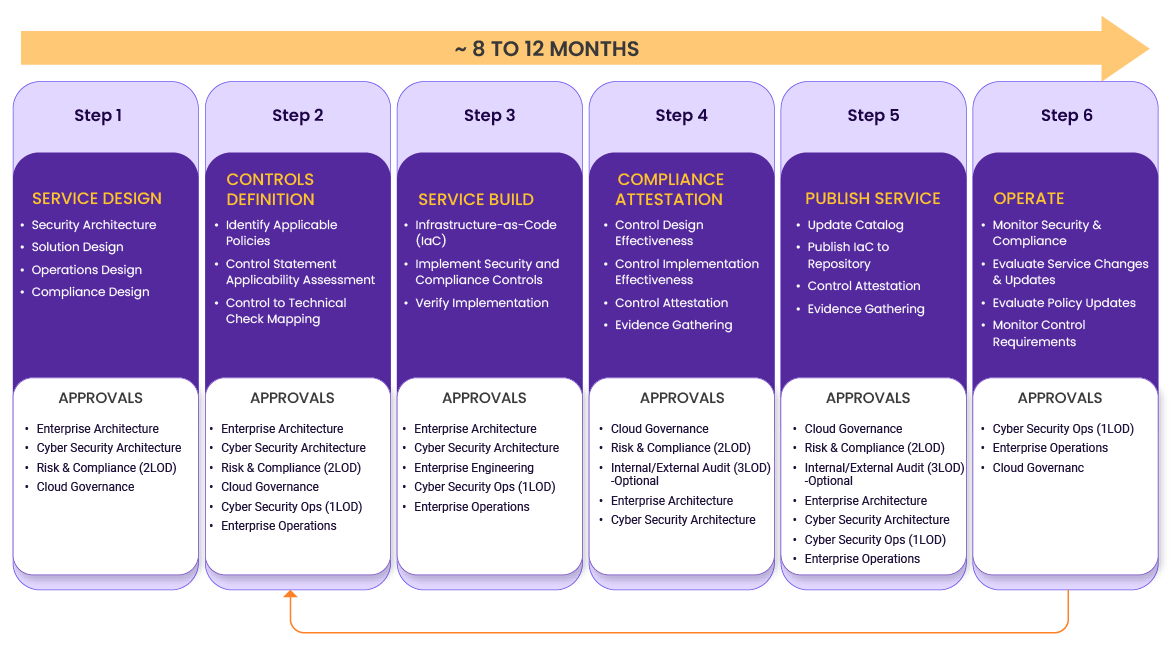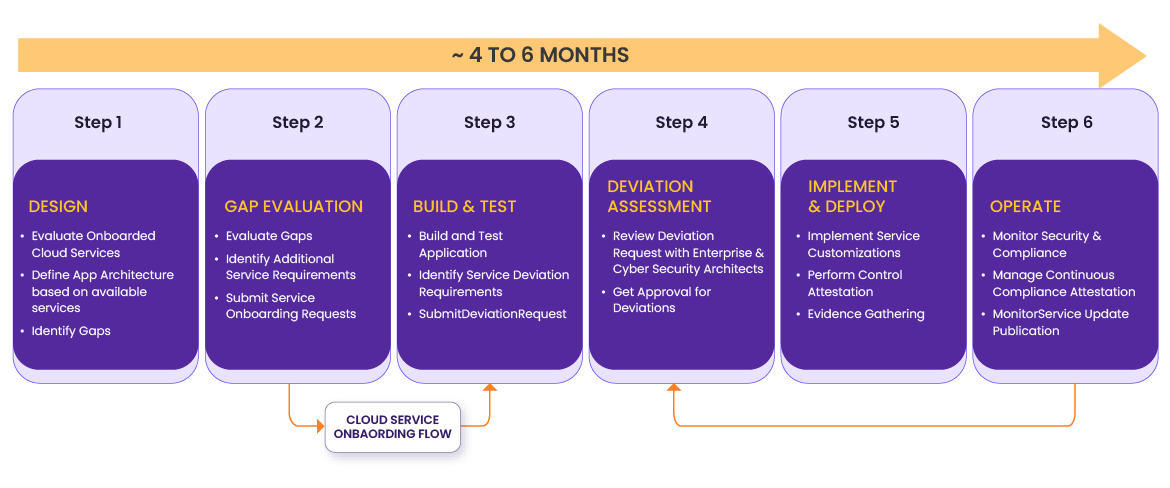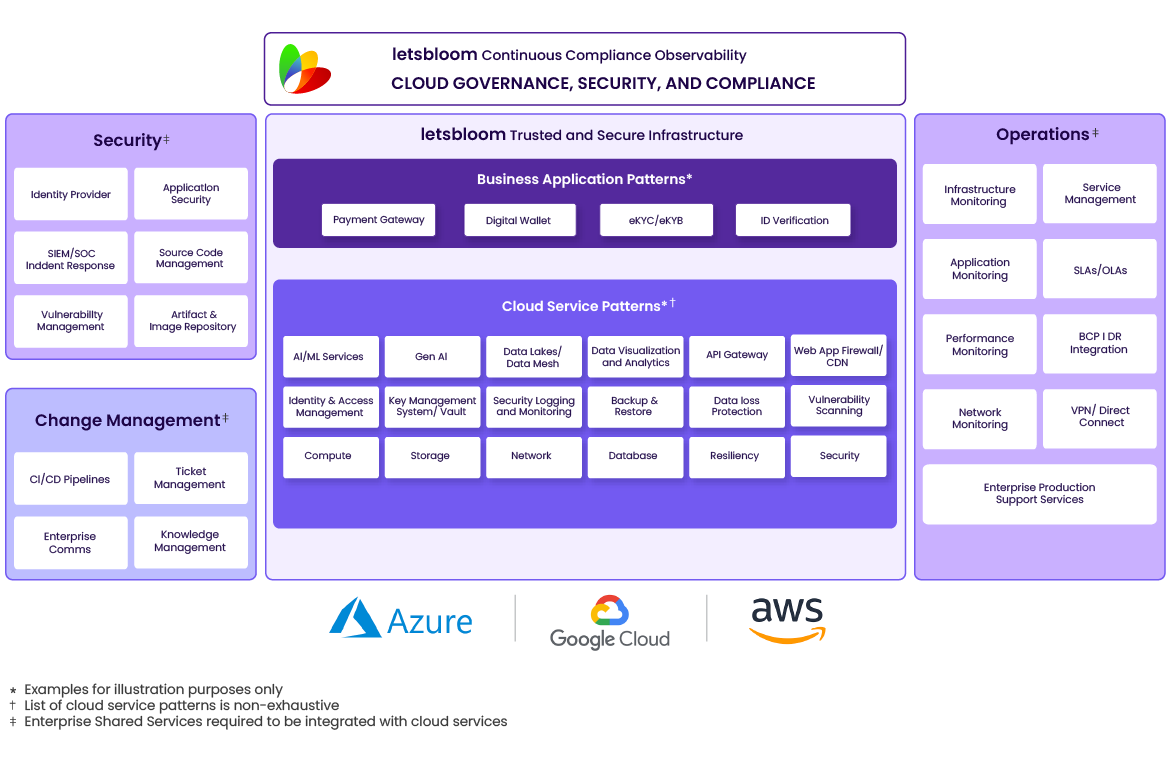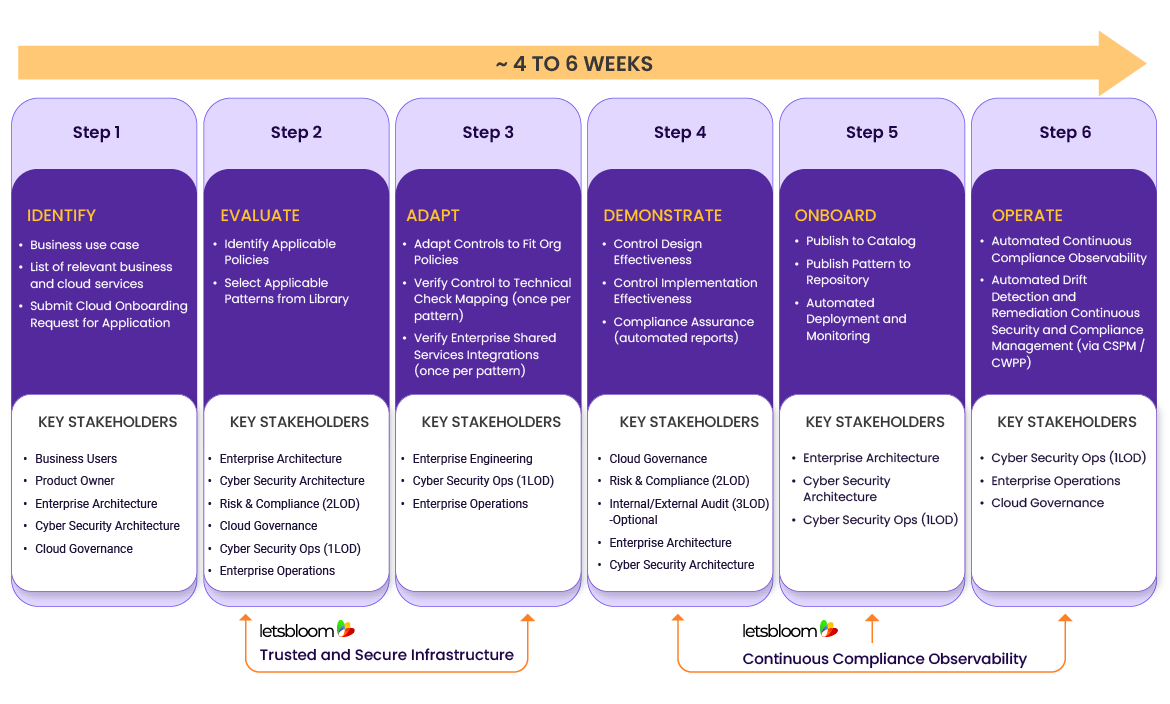Accelerating Cloud Service Onboarding for Optimal Growth and Innovation

Aditya Jayanthi
April 04, 2024


Cloud computing has eliminated the traditional technology constraints, enabling organizations to seamlessly adopt cutting-edge technologies like Gen AI to foster innovation, automate operations, and generate new revenue streams. However, despite this potential, the onboarding process for new cloud services is often complex and time-consuming, primarily due to siloed methodologies and regulatory considerations.
Challenges of Traditional Cloud Service Onboarding
Traditional approaches to cloud service onboarding are typically siloed, requiring each service (Infra-as-a-Service or managed cloud service) to be onboarded separately. This repetitive onboarding process leads to significant resource allocation challenges and hampers organizational agility. Onboarding a single service usually takes 8 to 12 months, necessitating organizations to scale their teams to onboard multiple services concurrently.

Typical Cloud Service Onboarding Flow
Moreover, as the application teams can use only the onboarded services for developing their application architecture, the traditional approach limits their flexibility and agility in building, testing, and deploying new experiences.

Business Application Deployment Flow
letsbloom Solution: Cloud Services Target Operating Model (TOM)
To address traditional onboarding challenges and accelerate cloud adoption, it is essential to fundamentally reconsider the onboarding methodology. The focus should shift from individual service onboarding to use case-driven service prioritization and pattern-based implementation. letsbloom’s Cloud Services Target Operating Model (TOM) presented below outlines this new approach:

letsbloom Trusted and Secure Infrastructure Operating Model
letsbloom Trusted and Secure Infrastructure
Our platform comes with prebuilt patterns for deploying 'secure-by-design and compliant-by-default' cloud infrastructure. These patterns include:
- Infrastructure-as-code: Provisions a set of cloud resources that are secure-by-design and compliant-by-default.
- Policy-as-code: Encodes relevant policy control statements in-code to automatically verify compliance against policies and standards.
- Controls-as-code: Enforces and monitors a set of preventative, detective, and corrective technical controls on all provisioned cloud resources.
- Compliance-as-code: Continuously monitors, alerts, and reports compliance against relevant policies and standards in near real-time.
Our policy engine interprets your internal policies and control statements and maps them against the required technical controls.
letsbloom Continuous Compliance Observability
Our platform provides instant observability of 'security and compliance posture' of any cloud workload, running on any public cloud, against any regulatory guideline, industry benchmark, or internal policy. Additionally, it enables context-specific observability through a combination of CSPM, CIEM, KSPM, and CWPP for all current workloads, including environments on the cloud and on-premises.
Secure Cloud Service Onboarding Methodology: A Use Case-driven Approach
This use case-driven approach accelerates cloud adoption and delivers business outcomes more quickly. It shortens the usual onboarding time from ~ 12 to 18 months to ~ 4 to 6 weeks.

letsbloom Secure Cloud Service Onboarding Flow
Step 1: Identify
Identify the necessary cloud, business, and SaaS services for a specific business use case. For example, the development of an AI Assistant app would require Azure Secure Landing Zone, Data Ingress, Data Storage, API Gateway, and Private Azure Open AI instance services (Note: The list is non-exhaustive).
Step 2: Evaluate
Identify the ‘letsbloom Trusted & Secure Infrastructure Patterns’ for selected services from the pattern library. Assess the prebuilt controls-as-code against applicable internal policies and standards for compliance control.
Step 3: Adapt
Customize the patterns to add or modify controls-as-code for implementing organization-specific control requirements.
Step 4: Demonstrate
Demonstrate the effectiveness of control design and implementation by providing the ‘letsbloom Security and Compliance Posture Report’ that gives control attestation against relevant internal policies and standards.
Step 5: Onboard
Publish the pattern in the catalog. The pattern will be available for all teams in the organization for ongoing use. If a team does not require deviations from the pattern, they can instantly provision the cloud resources using enterprise CI/CD pipelines.
Step 6: Operate
The ‘letsbloom Continuous Compliance Observability’ platform provides automated drift detection and remediation on all cloud instances deployed using the patterns.
Conclusion
Accelerated cloud service onboarding is crucial for realizing the full potential of cloud. By embracing letsbloom’s use case-driven service prioritization and pattern-based implementation, organizations can effectively address the challenges of traditional onboarding methodology and fast-track their cloud adoption journey.
Interested to see letsbloom’s platform in action?
Join our team at Google Cloud Next ’24 and gain a comprehensive understanding of how our platform can empower you accelerate your cloud service onboarding.
To express your interest or pre-book your appointment, write to us at: Google Cloud Next ’24










